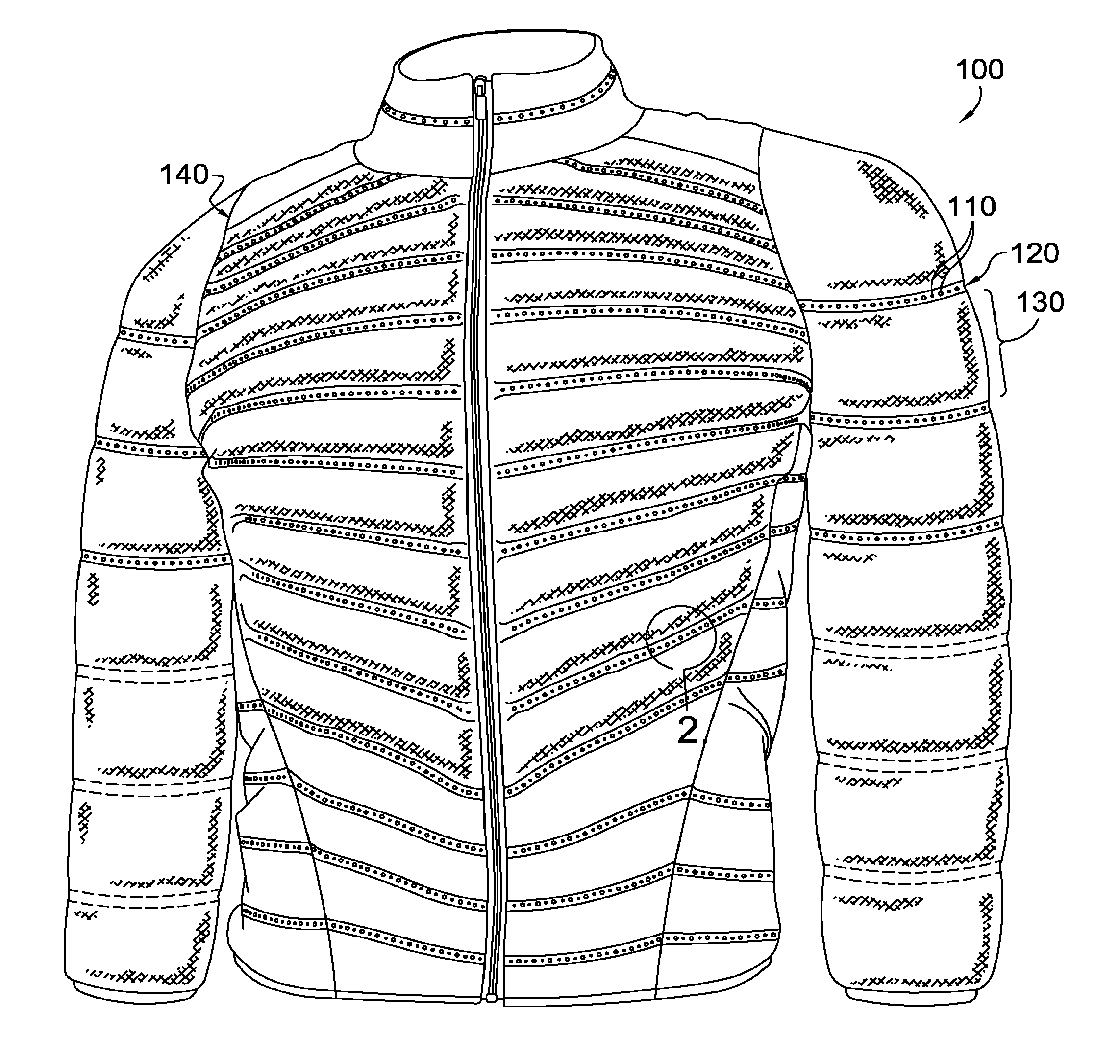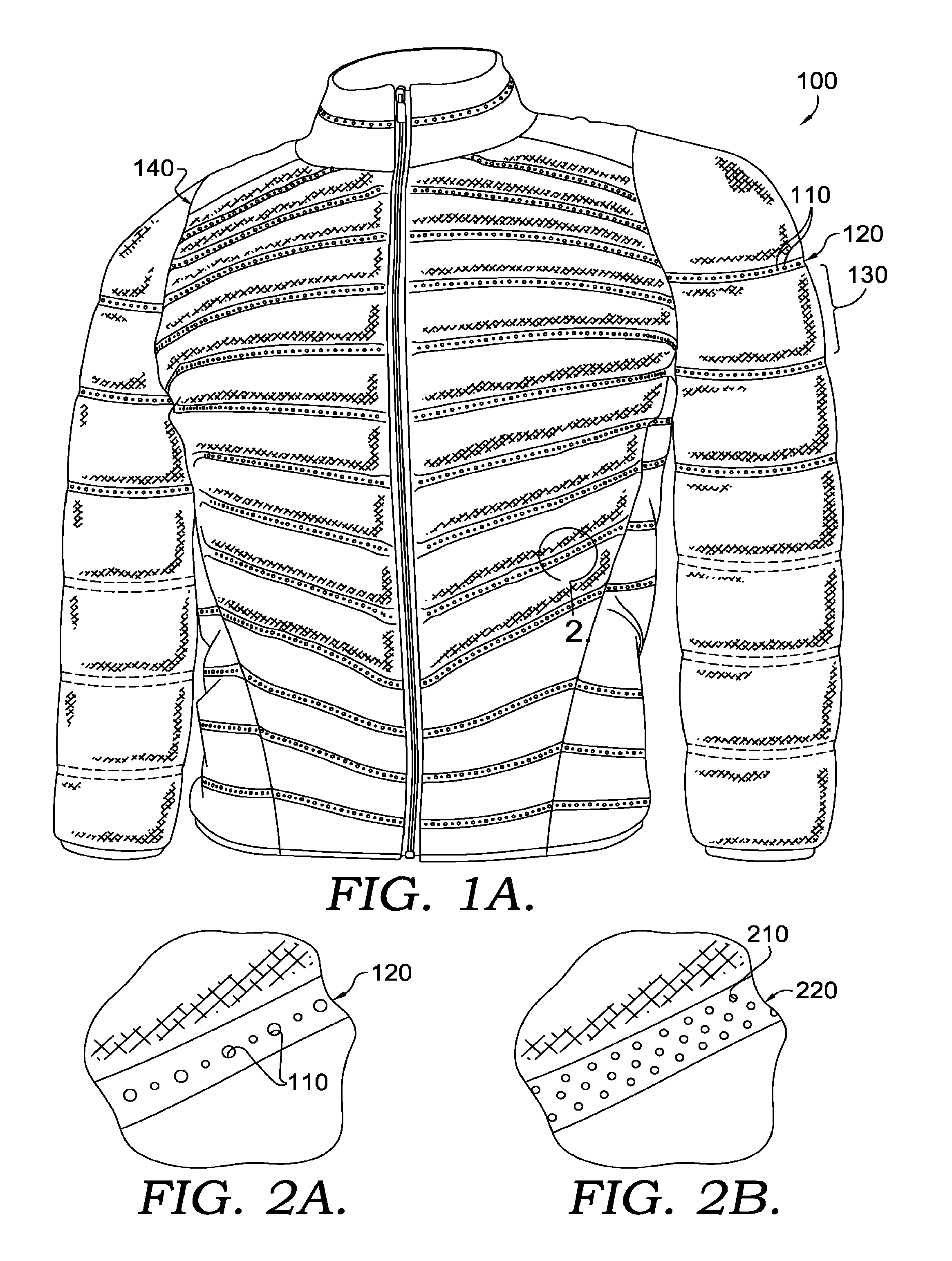Cold weather vented garment
a cold weather and garment technology, applied in the field of cold weather insulation garments, can solve the problems of fibers lacking the sharp shafts of down, more susceptible to tearing or down loss, and still difficult to contain with a light weight textil
- Summary
- Abstract
- Description
- Claims
- Application Information
AI Technical Summary
Benefits of technology
Problems solved by technology
Method used
Image
Examples
Embodiment Construction
[0021]FIGS. 1A and 1B are a front view 140 and back view 150 of a vented cold weather garment 100 in accordance with the present invention. The vented cold weather garment 100 in FIGS. 1A and 1B may be made from conventional synthetic or natural fabrics. The fabrics may be water repellent and fill proof, or alternatively such as in the case of light fabrics, they may need to be treated with waterproofing and down proofing chemicals such as for example, the chemical treatments referred to as DWR (durable water repellent). Since cold weather garments may be down or synthetic thermal fiber filled, an upside of these treatments, is that they prevent the fill from poking through the fabric and, they prevent water moisture from the environment from entering inside of the garment. A downside of these chemical treatments on fabrics, is that these treatments may create a barrier preventing moisture generated from perspiration to evaporate.
[0022]The vented cold weather garment in FIGS. 1A and...
PUM
| Property | Measurement | Unit |
|---|---|---|
| weights | aaaaa | aaaaa |
| weights | aaaaa | aaaaa |
| width size | aaaaa | aaaaa |
Abstract
Description
Claims
Application Information
 Login to View More
Login to View More - R&D
- Intellectual Property
- Life Sciences
- Materials
- Tech Scout
- Unparalleled Data Quality
- Higher Quality Content
- 60% Fewer Hallucinations
Browse by: Latest US Patents, China's latest patents, Technical Efficacy Thesaurus, Application Domain, Technology Topic, Popular Technical Reports.
© 2025 PatSnap. All rights reserved.Legal|Privacy policy|Modern Slavery Act Transparency Statement|Sitemap|About US| Contact US: help@patsnap.com



